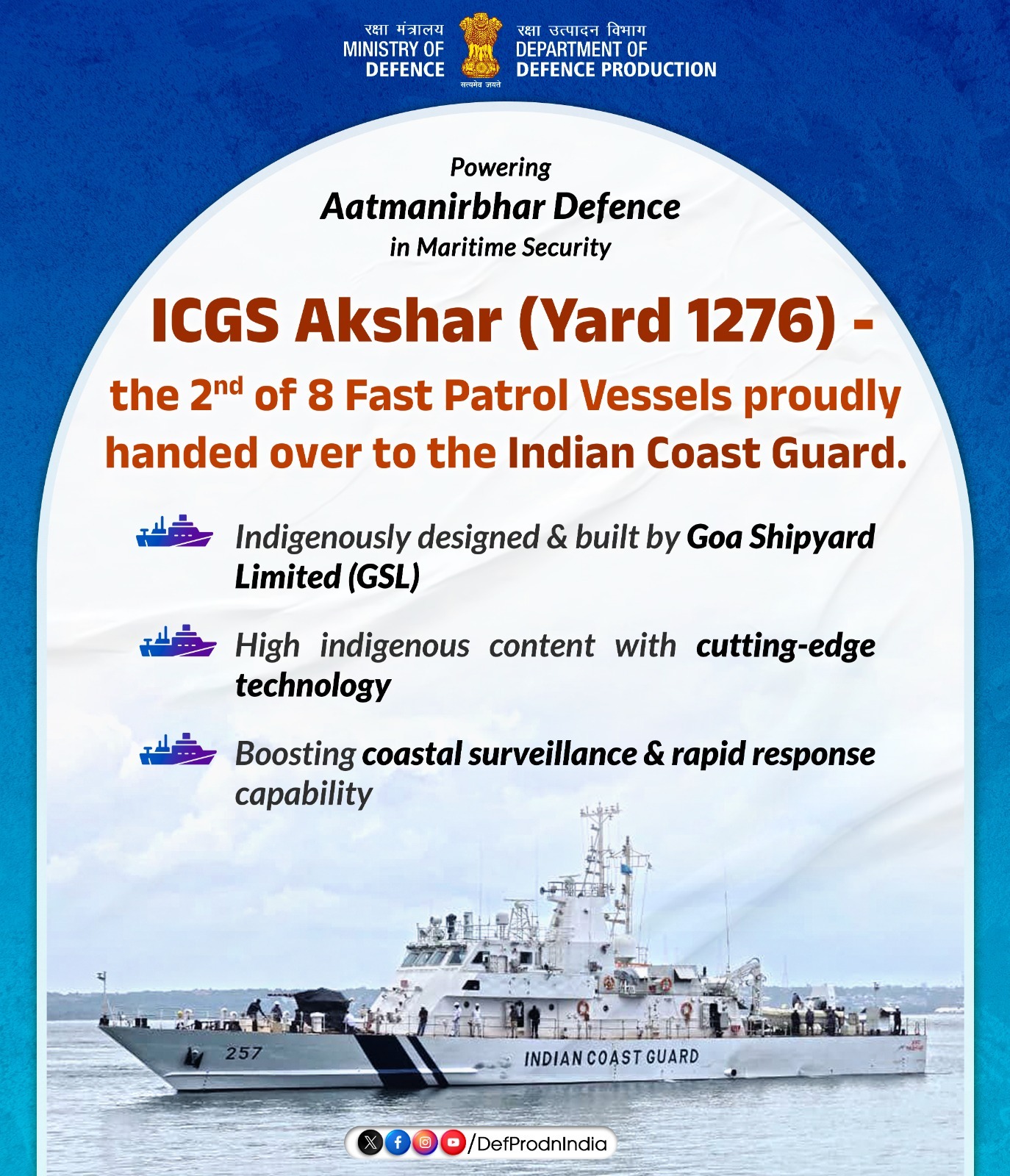Context:
ICGS Akshar, the second vessel in the Adamya‑class series, was recently commissioned at Karaikal, Puducherry, under the Eastern Seaboard region of the Coast Guard. “Akshar” means “imperishable,” symbolising ICG’s enduring commitment to secure seas.
Background:
· As part of its push for indigenous defence production, the Government of India awarded a contract in March 2022 to Goa Shipyard Limited (GSL) to build eight Fast Patrol Vessels (FPVs) for the Indian Coast Guard. Total contract value: Rs 473 crore.
· These vessels are called the Adamya‑class FPVs. They are being designed and built in‑house by GSL, to meet the operational requirements of ICG, with over 60% indigenous content.
Key Features & Capabilities:
· Indigenous Percentage: Over 60% of components are from Indian industry, contributing to Atmanirbhar Bharat / Make‑in‑India goals.
· Dimensions & Performance: Displacement about 320‑330 tons, length ~51‑52 m, beam ~8 m, draught ~2.5 m. Powered by twin marine diesel engines, driving CPPs. Max speed ~27 knots. Endurance ~1,500 nautical miles at economical speed.
· Weaponry & Systems: Armed with a 30 mm CRN‐91 gun, two 12.7 mm stabilised remote‑controlled machine guns, supported by fire control systems. Also equipped with advanced onboard systems: Integrated Bridge System (IBS), Integrated Platform Management System (IPMS), Automated Power Management System (APMS).
Expected Outcomes:
· Strengthening Maritime Security: With its speed, endurance, and capability to patrol India’s Exclusive Economic Zone (EEZ), offshore assets, island territories, Akshar will enhance surveillance, coastal security, anti‑smuggling, anti‑piracy, and search and rescue operations.
· Boost to Indigenisation: The high indigenous content means more domestic manufacturing, supply chain strengthening (including MSMEs), reduced dependency on imports, and more control over maintenance and future upgrades.
· Operational Edge: Systems like CPP for propulsion, IPMS, APMS etc. give manoeuvrability, efficiency, automation, lower response times. These are important for modern threats like fast incursions, illegal fishing, pollution, etc.
· Maritime Domain Awareness (MDA): More vessels means better coverage along the vast coastline and islands, which is critical given strategic challenges in the Indian Ocean Region — presence of non‑traditional threats, importance of maritime trade, etc.
Challenges:
· Maintenance of advanced systems and ensuring sustained operational readiness (crew training, spare parts etc.)
· Integration with other surveillance and information systems to avoid gaps in maritime domain awareness.
· Ensuring that indigenous content isn't just on paper but also in quality, reliability, and performance.
Conclusion:
ICGS Akshar’s commissioning is a significant milestone in India’s maritime security journey. It showcases India’s growing ship‑building capability, commitment to “Make in India”, and strategic intent to monitor and secure its maritime zones more effectively.







